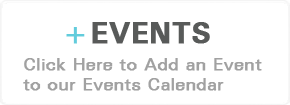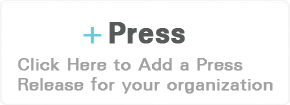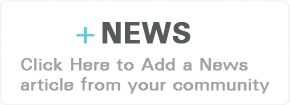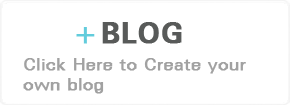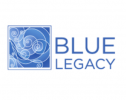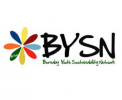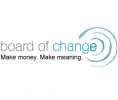News: The Human Factor II
And what about us?! - part II
On Change and Development
A Better Understanding
Forward by Jason Robinson
The state of the world is in a potentially serious situation, as we reach the limits of the carrying capacity for our planet and wrestle with topics such as climate change, and nulear incidents like 3 Mile Island, Chernobyl, and Fukushima people are uncertain and skeptical about the future. But how does the power of the mind play into that conversation, and how can we use the power of our minds to change our reality... let's look at the Human Factor II by Ira Sundberg for some positive insights.
By Ira Sundberg
The state of the world, as we know it, cannot ONLY be solved by clean-tech and renewable energies. To a great extent it is also about us the power of us as humans, to deal with the situation we have put ourselves in. We need to show that we can rise to the occasion, in more than one way, by being and becoming more responsible, also when it comes to action. It might be harder with ‘the human factor’, compared to the ecological and economical aspects. That does not mean that we can ignore it. On the contrary. Without taking the human aspect more into consideration everything will be slower, maybe even too slow to effect the change needed.
Kofi Annan wrote in ‘State of the World 2002’; We have the human and material resources with which to achieve sustainable development. With leadership, creativity,and goodwill, at Johannesburg and beyond, a peaceful, prosperous common future can be ours. (In World Watch Institute “State of the World 2009” you can read that…)
Why do we not act accordingly the knowledge we have, those of us that know? Others think that this is exaggerated, or maybe not true at all. One part of humanity are experiencing ecosystem problems as we speak, but has little or no power to influence. Others have not the knowledge, or maybe even an imagination for the possibilities.
One way is to understand this is that persons are different. If we understand this and learn more about ourselves and others, then we can speed up processes. The more we know about ourselves the better we can behave according to different persons and groups. A group that already knows a lot needs to be met differently, of course, compared to a group who are more ‘in the beginning’. If not taken into consideration resistance might be a result.
We are thinking and feeling persons. The myth that we are all rational and in control is proven right by being in the situation that we are in now. This myth, which can be seen as one of the insults of humanity, was established by Freud when he said that we are not masters in our own house, the unconscious has great power.
Feelings are basic for us humans, even when it comes to thinking, which has been proven by modern neuroscience. That we are feeling a lot of stress, is that a parallel to the stressed state of the world? Is stress a symptom, as well as a cause to how things are at present? To feel fear now is justified. Fear can help us deal with what needs to be dealt with. The problem arises when fear takes over and paralyse. To feel anger is also understandable and totally justified as well. Anger can be the driving force needed to act. Interest and commitment can give us the inclination, the power, needed to act.
In the western cultures the left hemisphere of the brain is the more in ‘focus’ . This part is about aspects like language, logic, rational-, analytic- and sequential reasoning. The right hemisphere of the brain focus on design, story, symphony, empathy, play and meaning, as described by Daniel Pink in ”A whole new mind”. This part is important when dealing with why we do not react more. Of course we are not ‘lobotomised’, the whole brain is active. Unbalance means that we cannot get the whole picture and thus making decisions that are not the optimal, for one thing. What is really beautiful is when the whole brain can work more optimally. Understanding is the bridge between feelings and thoughts, as was nicely put into words by the Norwegian philosopher Arne Naess. When we understand we have reached a deeper sense of acting ground. Depak Chopra says in the movie “The 11th Hour” that “People are really doing the best they can, given their level of awareness. So if we can increase our level of awareness we can also do more of the best we can.
About our consciousness and resistance
It is good to know some about psychological defences, or resistance as we say in everyday language. These are more or less in all of us. They are survival mechanisms that help us to survive when reality has been too much to handle, as children or adults. They are normal reactions to abnormal situations or states. Defense mechanisms are for psychological survival, but in the long run they can also be destructive. The non constructive is when we, for instance, deny or rationalise about the seriousnes of the state of the world. ‘ I don´t believe this or ‘I cannot do anything any way, so why bother’. There are other scientists that say this is not true.’ Defense mechanisms can also block out anxiety and fear, when reality is overwhelming. Do not think this is only for ‘the public’, politicians, decision-makers and people in power are not immune to this. They are persons too. Hopelessness and ‘I cannot take anymore’ does prevail here, as well.
The more conscious we are the better we can deal with reality, with less defences like denial or rationalisation. A way to illustrate this is with the Johari Window
Known to self Not known to self
|
Arena |
Blind spot |
|
Facade |
Unknown |
Known to
others
Not known
to others
The smaller the ‘blind spot’ and the ‘unknown’ is, the more time and energy we can us for reality.
About change
Let us try to understand a bit about how we go through change. A way to describe change and process is by the ‘Four Rooms of Change’ (Claes Janssen).
|
Contentment |
Renewal |
|
Denial |
Confusion |
The Four Rooms of Change ‘is a psychological theory, describing change as a move through four psychological stages or ‘rooms’. In all change, we move from a Contentment, which is lost, via a period in Denial, which is a defence of the old, through Confusion, which ends when we give up whatever it is of the old that had to be given up. The giving up is the turning point, making us open to the possibilities, the new, whereby we move on to Renewal.’ (from the website www.claesjanssen.com, 090217). As in other systems this is an ongoing process, a movement, between the room, is optimal.
When in shock or denial one needs help to deal with the actual feelings, so these can be worked through, and move forward. A way of doing this is with the ‘From Alarm to Action’-model, by Lennart Parknäs, a Swedish psychologist. Crisis reaction is a normal reaction to an abnormal situation. We cannot rationalise about this and tell people to listen to facts, or ‘just forget about the feelings and deal with reality’. That simply does not work. By this ‘model’ people can come through from paralysis and hopelessness and move on to action.
· Alarm You are scared, maybe paralysed by the situation we are in. You might be in the denial- or confusion-room.
· Sharing By talking with others, being listened to and taken serious for who and where you are, and whatever feelings you might have – being it anger, bitterness, feelings of resignation, among others. This can be done in a group, during a seminar or with friends or colleagues.
· Sense of belonging
Through sharing you can reach into feeling connected, that you are not alone, that ‘me’ is part of ‘us’.
· Empowerment
Then strength can start growing. From feeling weak or hopeless, for instance, you begin to feel ‘I can do something’. Hope begins to grow. Your interest and energy start to grow.
· Action
Once you get to feeling strength and hope you might want to act, to do something. You can feel excitement and want to be part of something meaningful.
The model can be used in lectures and seminar. This is one example;
· Start, maybe, with telling ‘the hard facts’.
· Let participants have some time to share what they think and feel about what they have heard.
· Talk about good examples
· Inspire people, for instance, with suggestions to what they can do – concrete and from small to big examples, where they can find more inspiration and learn more.
We need to know that we also have to show different ways of dealing with these issues. More information is not, the only, solution. A lot of people already know enough. Maybe we do not need more info, but more knowledge.
These are but figures. The work needed is on other levels. That is about us becoming more whole persons – connected with our body, mind and soul. Well connected and with better access to both parts of the brain, as well as with our hearts.
Ira Sundberg, MSc, eco-psychologist
ira@irasundberg.se
Category:


